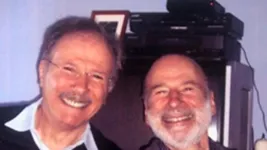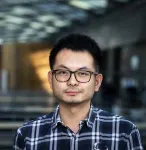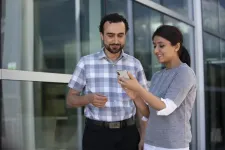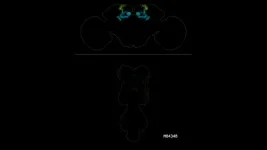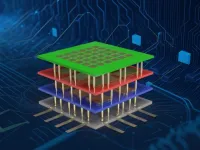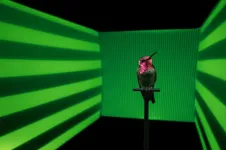(Press-News.org) A Rutgers biophysical chemist and his brother, a political scientist on the West Coast, have joined intellectual forces, realizing a long-standing dream of co-authoring an article that bridges their disciplines involving cells and society.
In their paper, they have proposed that powerful parallels exist between the microscopic, natural world of cells and molecules and the human-forged realm of organizations and political systems.
Taking it a step further, the brothers – eminent scholars who have served as top leaders of their respective institutions – have proposed that humankind can draw lessons from what the microscopic and macroscopic worlds have in common. Ideally, they said, their perspective could alert policymakers to strategies for responding adaptively to improve the performance of their institutions and political systems.
Writing in the Proceedings of the National Academies of Science Nexus, Kenneth Breslauer, a Linus C. Pauling Distinguished Professor of Chemistry and Chemical Biology with the Rutgers School of Arts and Sciences (SAS), and his older brother, George Breslauer, a Chancellor’s Professor of Political Science at the University of California-Berkeley, have identified and analyzed similarities in rules that apply to both the natural and social realms.
“Our focus is particularly timely given the growing global challenges to various forms of governance and the emergence of history-changing biology,” said Kenneth, who has been a member of the Rutgers faculty for 50 years and is the university’s founding dean of life sciences. “Many stability-based concepts, characteristics and phenomena within the physical sciences find analogous expression in the influences on the relative stabilities of socio-political systems.”
Kenneth, one the world’s foremost authorities on the forces that control the structure and function of biological molecules, was described in 2018 by former SAS Executive Dean Peter March as “the architect of our outstanding life science programs, which have helped establish Rutgers as a premier institution within the [Association of American Universities.]” In addition, Kenneth has been the dean of the Division of Life Sciences, the vice president for Health Science Partnerships and the vice president for Research.
His brother George is recognized as a world-renowned expert in Soviet and Russian politics and foreign relations. In his area of expertise, he is the author of 14 books. At UC Berkeley, George has been the chair of the Center for Slavic and East European Studies, dean of the social sciences, executive dean of the College of Letters and Science and executive vice chancellor and provost.
Born 14 months apart, the Breslauers grew up in Jackson Heights, Queens, raised by parents who were refugees from Nazi Germany.
“George and I are each other’s best friend,” Kenneth said.
The brothers have waited years to work together. Their paper, they said, is a “bucket list” item for both.
The two used the shared concept of “stability” as their prism.
The molecular workings of microscopic systems such as a cell or molecule are generally understood to be subject to the laws of nature, the Breslauers said, while social and political events are thought to be structured by human action and chance. However, both natural, molecular systems and sociopolitical organizations, under the influences of analogous features, they said, exhibit some level of stability, instability and even "metastability," a state of precarious stability.
For example, a chemical system can be metastable for extended periods of time, when it becomes trapped in a high energy state, until outside influences are sufficient to perturb and disrupt the stability of the trapped species. Analogously, isolated social states such as the former country of East Germany can persist in a metastable state for decades until the isolating boundaries are breached by outside influences.
The researchers likened a political science macroscopic concept, known as the “collective action” barrier, with the chemical property of cooperativity, which accelerates microscopic molecular transformations from one chemical state to another.
With respect to the societal collective action barrier, individuals who want to change an aspect of their government are less likely to act if they believe they are alone. Rather, they are more likely to advocate collectively for change if they believe they are one of many similarly minded people.
Likewise, in the natural world, when molecules are arranged in an optimal configuration, they can collectively “snowball,” accelerating a chemical transformation. This phenomenon is known as a cooperative transition.
The idea for the study arose five years ago when the Breslauer brothers were strolling near Lincoln Center in Manhattan. George mentioned that his latest work had just been published. Kenneth asked George about the theme of his research that shaped the publications.
“He told me it was proposing what features allow certain social institutions to maintain stability for extended periods of time, a characteristic that can be referred to as ‘longitudinal persistence,’” Kenneth said. “George went on to identify about five characteristics that were necessary. I stopped him at that point and said, ‘George, you just described features that are completely analogous to what provides molecules with their stability.’”
Kenneth then realized that the microscopic molecular world he studied exhibited many analogous core features with the macroscopic societal world that his brother studied, particularly in terms of the features that allow systems to form, adapt and persist, or rise and fall like the Roman Empire.
“One can think of a central government as the central nucleus of the cell,” Kenneth said. “Imagine regional governments as the embedded mitochondria and other specialized organelles. Carrying the analogy further, a country's borders are analogous to the cell membrane.”
Kenneth added; “There are so many parallels between nature and society. Identifying and examining such structural, organizational and functional analogues yields a wealth of information that is just waiting to be mined.”
END
Is there a common link between the physical and social worlds? Two brothers think so.
A Rutgers biophysical chemist and his elder sibling, a political scientist at Berkeley, explore shared concepts
2024-01-11
ELSE PRESS RELEASES FROM THIS DATE:
Artificial intelligence helps unlock advances in wireless communications
2024-01-11
A new wave of communication technology is quickly approaching and researchers at UBC Okanagan are investigating ways to configure next-generation mobile networks.
Dr. Anas Chaaban works in the UBCO Communication Theory Lab where researchers are busy analyzing a theoretical wireless communication architecture that will be optimized to handle increasing data loads while sending and receiving data faster.
Next-generation mobile networks are expected to outperform 5G on many fronts such as reliability, coverage and intelligence, explains Dr. Chaaban, an Assistant Professor ...
Personalizing lifestyle interventions for cancer survivors
2024-01-11
MIAMI, FLORIDA (Jan. 10, 2024) – Researchers with Sylvester Comprehensive Cancer Center at the University of Miami Miller School of Medicine have received funding to better understand how personalized nutrition and exercise programs can improve quality of life after cancer treatment.
The three-year, approximately $700,000 grant from the Applebaum Foundation with added support by Sylvester, will fund the On Precision Oncology Interventions in Nutrition and Training (OnPOINT) clinical study to develop individualized diet and activity programs ...
Louisiana Cancer Research Center accepting applications for summer undergraduate research program - SUCRE
2024-01-10
January 10, 2024, New Orleans, LA - College students interested in pursuing a career in cancer research are urged to apply to The Louisiana Cancer Research Center’s 8-week Summer Undergraduate Cancer Research Experience, SUCRE.
Selected students can explore and develop their interests by working in a research lab with an assigned faculty mentor from member institutions Louisiana State University Health Sciences Center - New Orleans, Tulane School of Medicine and Xavier University of Louisiana.
The program runs from Thursday, June 3 through Friday, July 26, 2024. ...
NASA’s Webb discovers dusty ‘cat’s tail’ in Beta Pictoris System
2024-01-10
Beta Pictoris, a young planetary system located just 63 light-years away, continues to intrigue scientists even after decades of in-depth study. It possesses the first dust disk imaged around another star — a disk of debris produced by collisions between asteroids, comets, and planetesimals. Observations from NASA’s Hubble Space Telescope revealed a second debris disk in this system, inclined with respect to the outer disk, which was seen first. Now, a team of astronomers using NASA’s James Webb Space Telescope to image the Beta Pictoris system (Beta Pic) has discovered a new, previously unseen structure.
The ...
Texas A&M AgriLife Research gets $5.2 million grant for onion improvement
2024-01-10
Texas A&M AgriLife Research received more than $5.2 million in grant funding from the U.S. Department of Agriculture’s National Institute of Food and Agriculture for a project to address multiple aspects of the southern U.S. onion harvest system.
Subas Malla, Ph.D., Texas A&M AgriLife Research associate professor at the Texas A&M AgriLife Research and Extension Center in Uvalde, will serve as director for a short-day onion project. (Texas A&M AgriLife photo by Paul Schattenberg)
The director for the “Ensuring Future Economic Viability of U.S. Short-Day ...
Preeclampsia and preterm birth risk may be reduced by calcium dose lower than current WHO standard
2024-01-10
Key points:
According to two trials of 11,000 pregnant women in India and in Tanzania, low-dose calcium supplementation (500 milligrams per day) appears as effective at reducing the risk of preeclampsia and preterm birth as high-dose calcium supplementation (1,500 milligrams per day).
The World Health Organization currently recommends high-dose calcium supplementation—equivalent to three calcium pills a day—for pregnant women in contexts with low-calcium diets, predominantly low- and middle-income countries. Lowering the pill burden to one 500mg ...
MSU-led study: Majority of US hospitals found COVID-19 reporting directives to be inconsistent
2024-01-10
EAST LANSING, Mich. – The U.S. health care response during the early stages of the COVID-19 pandemic unveiled challenges in public health reporting systems and electronic clinical data exchange.
A new study led by John (Xuefeng) Jiang, Eli Broad Endowed Professor of Accounting in MSU’s Broad College of Business, examines U.S. hospitals’ experiences in public health reporting, accessing clinical data from external providers for COVID-19 patient care, and their success in reporting vaccine-related ...
Janelia shares ‘greatest hits’ of tools to study the fly brain
2024-01-10
The holidays may be over, but neuroscientists are getting a special gift to kick off the new year: access to a greatest hits collection from one of Janelia’s longest running and successful Project Teams.
Janelia’s FlyLight Project Team, which has worked for more than a decade to create tools to study the fly brain, is making a core collection of their best genetically engineered fly strains available to researchers worldwide through the Bloomington Drosophila Stock Center. The brain images of these flies, along with hundreds of thousands of images from thousands of additional fly lines, are also now freely accessible through Janelia websites.
These ...
Integrating dimensions to get more out of Moore’s Law and advance electronics
2024-01-10
UNIVERSITY PARK, Pa. — Moore's Law, a fundamental scaling principle for electronic devices, forecasts that the number of transistors on a chip will double every two years, ensuring more computing power — but a limit exists.
Today's most advanced chips house nearly 50 billion transistors within a space no larger than your thumbnail. The task of cramming even more transistors into that confined area has become more and more difficult, according to Penn State researchers.
In a study ...
Need for speed: How hummingbirds switch mental gears in flight
2024-01-10
Hummingbirds use two distinct sensory strategies to control their flight, depending on whether they’re hovering or in forward motion, according to new research by University of British Columbia (UBC) zoologists.
“When in forward fight, hummingbirds rely on what we call an ‘internal forward model’—almost an ingrained, intuitive autopilot—to gauge speed,” says Dr. Vikram B. Baliga, lead author of a new study on hummingbird locomotion published in Proceedings of the Royal Society B. ...
LAST 30 PRESS RELEASES:
Collaborative study uncovers unknown causes of blindness
Inflammatory immune cells predict survival, relapse in multiple myeloma
New test shows which antibiotics actually work
Most Alzheimer’s cases linked to variants in a single gene
Finding the genome's blind spot
The secret room a giant virus creates inside its host amoeba
World’s vast plant knowledge not being fully exploited to tackle biodiversity and climate challenges, warn researchers
New study explains the link between long-term diabetes and vascular damage
Ocean temperatures reached another record high in 2025
Dynamically reconfigurable topological routing in nonlinear photonic systems
Crystallographic engineering enables fast low‑temperature ion transport of TiNb2O7 for cold‑region lithium‑ion batteries
Ultrafast sulfur redox dynamics enabled by a PPy@N‑TiO2 Z‑scheme heterojunction photoelectrode for photo‑assisted lithium–sulfur batteries
Optimized biochar use could cut China’s cropland nitrous oxide emissions by up to half
Neural progesterone receptors link ovulation and sexual receptivity in medaka
A new Japanese study investigates how tariff policies influence long-run economic growth
Mental trauma succeeds 1 in 7 dog related injuries, claims data suggest
Breastfeeding may lower mums’ later life depression/anxiety risks for up to 10 years after pregnancy
Study finds more than a quarter of adults worldwide could benefit from GLP-1 medications for weight loss
Hobbies don’t just improve personal lives, they can boost workplace creativity too
Study shows federal safety metric inappropriately penalizes hospitals for lifesaving stroke procedures
Improving sleep isn’t enough: researchers highlight daytime function as key to assessing insomnia treatments
Rice Brain Institute awards first seed grants to jump-start collaborative brain health research
Personalizing cancer treatments significantly improve outcome success
UW researchers analyzed which anthologized writers and books get checked out the most from Seattle Public Library
Study finds food waste compost less effective than potting mix alone
UCLA receives $7.3 million for wide-ranging cannabis research
Why this little-known birth control option deserves more attention
Johns Hopkins-led team creates first map of nerve circuitry in bone, identifies key signals for bone repair
UC Irvine astronomers spot largest known stream of super-heated gas in the universe
Research shows how immune system reacts to pig kidney transplants in living patients
[Press-News.org] Is there a common link between the physical and social worlds? Two brothers think so.A Rutgers biophysical chemist and his elder sibling, a political scientist at Berkeley, explore shared concepts
